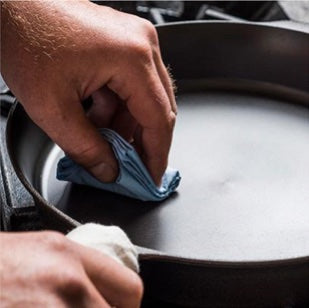Brothers Stephen and Chris Muscarella, the creators of The Field Skillet, noticed their grandmother’s vintage cast iron pans, dating back to the 1930s, were lighter and better to cook on than modern cast iron counterparts.
So they started to research why.
That’s how they discovered a significant difference in how foundries poured iron today compared to the past. Most cast iron options were suffering from the inability to pour iron as thin as foundries could back in the ‘30s.
What did that mean for you and cast iron devotees like Stephen and Chris? At one point there were less lightweight cast iron options available for purchase.
Science and collaboration lead these innovative brothers to create their own skillets using iron castings made by hand. The result was a thinner iron pour and a lighter pan.
Their next mission: Finding the best way to smooth down the surface that didn’t sacrifice seasoning and performance. They found through many tests, that electrolysis tanks provided an impressively smooth surface. The bottom of The Field Skillet is where you can feel how the smooth texture is less likely to cause scratches, making these skillets an excellent choice for glass cooktops and induction stoves.
The Field Skillet was designed to solve the two biggest pitfalls to cast iron: the weight and the rough surface—the same main reasons glass stove tops and cast iron didn’t work well together in the past. Cast iron skillets inspired by the quality and workmanship of the past, but made for cooking today on any surface.
Within the range of sizes available from Field Company are skillets starting as small as the No.6 (8⅜”) up to the No.12 (13⅜”). Finding the right size for your element of choice should be easy.






